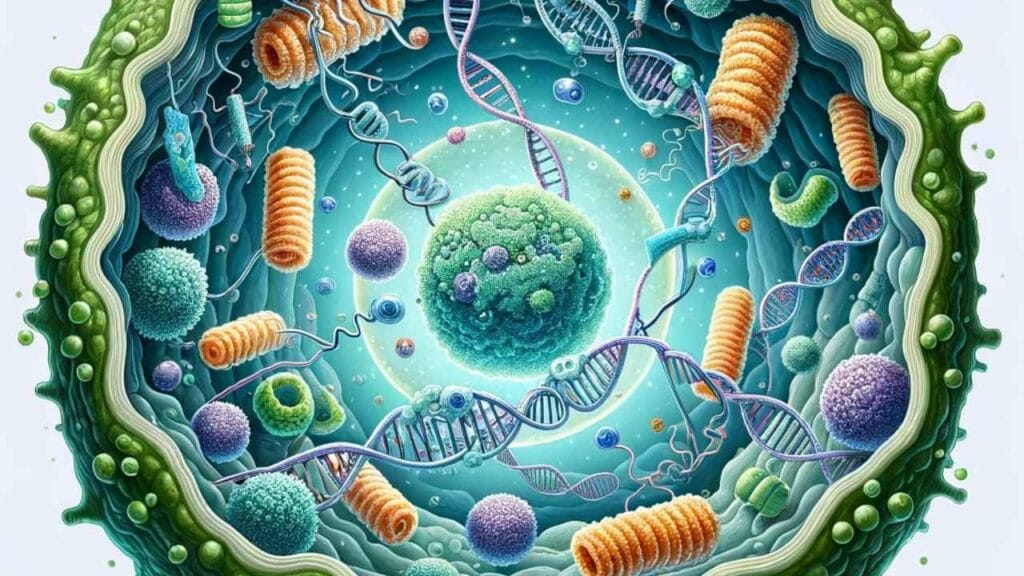What are Cold Shock Proteins and How Do They Function?
We include links to products we think are useful for our readers. If you click and buy a product through one of the affiliate links on this page, we may earn a small commission.

Cold shock proteins (CSPs) are special proteins that help organisms survive sudden drops in temperature. These proteins are crucial for protecting cells and ensuring they work correctly during cold stress. CSPs are found in many different organisms, from bacteria to humans. By studying CSPs, scientists can learn more about how life adapts to extreme conditions.
This knowledge can lead to discoveries in medicine and biotechnology, improving our ability to treat diseases and develop new technologies.
What are Cold Shock Proteins?
Cold shock proteins are a type of protein produced by cells when they are exposed to cold temperatures. They were first discovered in bacteria, where scientists noticed that certain proteins were made in larger amounts when the temperature dropped. This discovery led to more research, and now we know that CSPs are found in many organisms, including plants, animals, and humans.
CSPs help cells adapt to cold environments by stabilizing RNA and preventing the formation of harmful structures that can occur when temperatures drop. They also help in the proper folding of other proteins, ensuring that cellular processes continue smoothly even in the cold.
Some examples of organisms that produce CSPs include:
Escherichia coli (E. coli): A common bacteria used in research that produces CSPs to survive in cold environments.
Plants: Many plants produce CSPs to protect their cells during cold weather, helping them survive frost and low temperatures.
Humans: Human cells also produce CSPs, which play a role in protecting our cells during cold exposure.
Structure of Cold Shock Proteins
Cold shock proteins have a unique structure that allows them to function effectively in cold environments. They are typically small proteins, consisting of around 70-100 amino acids. This small size helps them quickly respond to changes in temperature.
One key feature of CSPs is the presence of a cold shock domain (CSD). This domain is responsible for binding to RNA and DNA, stabilizing these molecules, and preventing them from forming structures that could harm the cell. The CSD is highly conserved, meaning it is similar across different species, highlighting its importance in cellular function.
Compared to other proteins, CSPs are more flexible. This flexibility allows them to adapt to different shapes and structures, making them effective at stabilizing various cellular components during cold stress.
How Do Cold Shock Proteins Function?

Cold shock proteins work by stabilizing cellular structures and helping the cell adapt to cold temperatures. When cells are exposed to cold, the normal processes of the cell can slow down or become disrupted. CSPs help mitigate these effects in several ways:
Stabilizing RNA: Cold shock proteins bind to RNA molecules, preventing them from forming secondary structures that can interfere with their function. This helps ensure that RNA can still be used to make proteins, even in the cold.
Protein Folding: CSPs assist in the proper folding of other proteins. In cold conditions, proteins can misfold, leading to cellular stress. CSPs help maintain the correct structure of these proteins, ensuring they function correctly.
Gene Regulation: Cold shock proteins can also influence the expression of other genes. By binding to DNA, they can help regulate which genes are turned on or off in response to cold, helping the cell adjust its activities to better cope with the temperature change.
An example of CSPs in action is seen in E. coli bacteria. When the temperature drops, E. coli produces CSPs that help the bacteria continue to grow and divide, even in the cold. This ability to quickly respond to temperature changes is crucial for their survival.
Biological Significance of Cold Shock Proteins
Cold shock proteins are vital for the survival and adaptation of many organisms. They play a key role in helping cells cope with the stress caused by sudden temperature drops. This ability to respond to cold is especially important for organisms living in environments where temperatures can change rapidly.
In addition to their role in cold adaptation, CSPs also have a broader impact on cellular health. By stabilizing RNA and proteins, they help maintain the overall stability and function of the cell. This protective role is important not only in cold environments but also in other stressful conditions that can affect cellular function.
Applications of Cold Shock Proteins
The unique properties of cold shock proteins have several applications in medicine and biotechnology. For example, CSPs can be used to improve the production of proteins in bacterial cultures. By incorporating CSPs into bacteria used for protein production, scientists can enhance the yield and quality of the proteins produced, even under cold conditions.
In medicine, CSPs have potential therapeutic applications. For instance, they could be used to protect cells during cold storage, such as in organ transplantation. By reducing the damage caused by cold temperatures, CSPs could improve the viability and success of transplanted organs.
Researchers are also exploring the use of CSPs in developing new treatments for diseases. For example, understanding how CSPs protect cells from stress could lead to new strategies for protecting cells from damage caused by other types of stress, such as oxidative stress or inflammation.
Additionally, the relationship between cold shock proteins (CSPs) and ice baths is an emerging area of interest, as scientists and athletes alike explore how exposure to cold temperatures can influence the body’s biological processes, including the activation of CSPs.
Final Thoughts
Cold shock proteins are essential for helping organisms survive sudden drops in temperature. They stabilize cellular structures, assist in protein folding, and regulate gene expression, ensuring that cells can continue to function in the cold. CSPs are found in many organisms and have important applications in medicine and biotechnology.
By studying CSPs, scientists can gain valuable insights into how life adapts to extreme conditions, leading to new discoveries and innovations.
References
Lindquist, J. A., & Mertens, P. R. (2018). Cold shock proteins: from cellular mechanisms to pathophysiology and disease. Cell Communication and Signaling, 16(1), 63.




